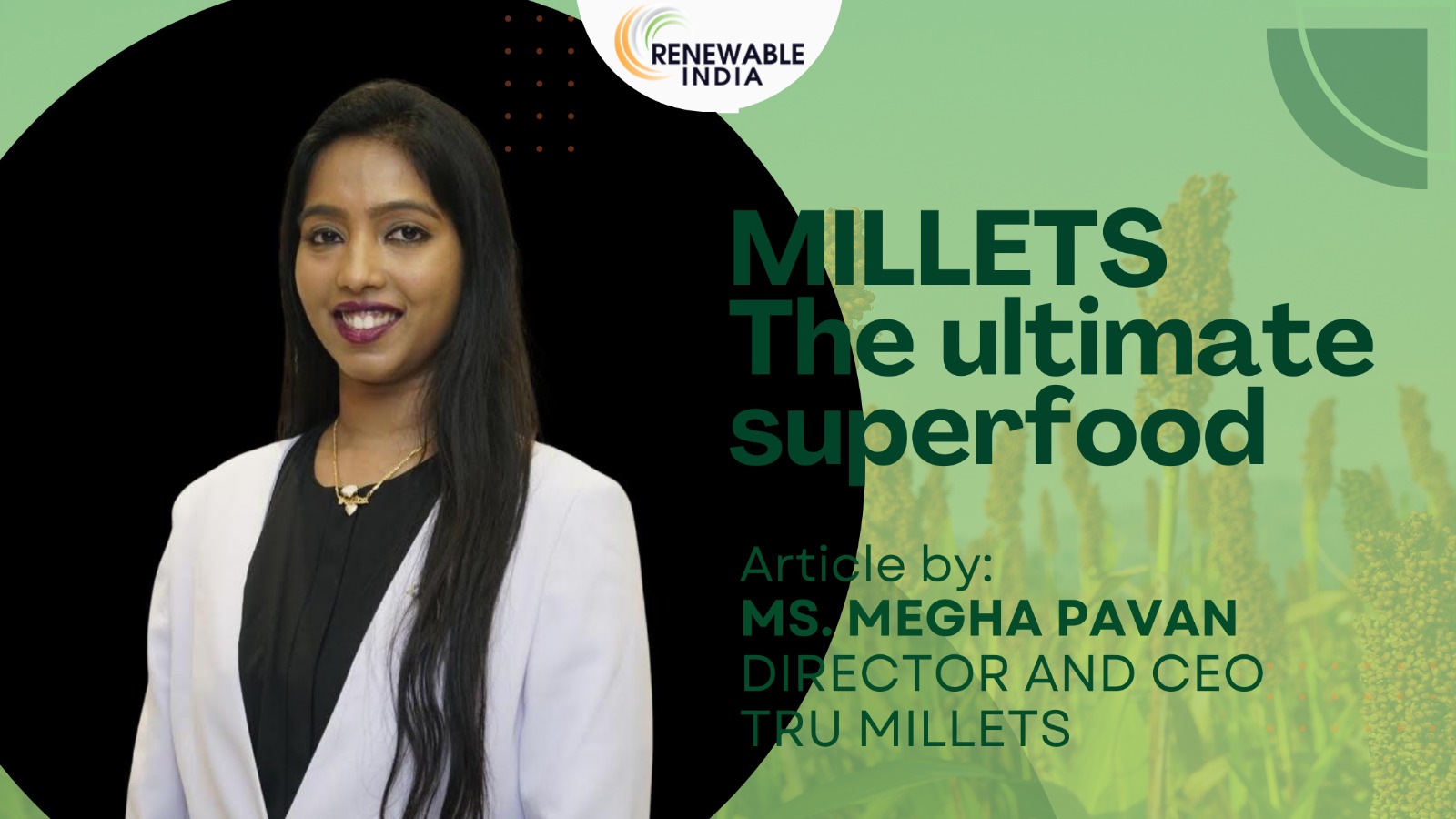
Millets are gradually establishing themselves as a crop for the future based on factors of sustainable agriculture. Millets alongside their excellent nutritional benefits also appear to be the hope in a world of changing climatic patterns that pose great threats to food production. The most obvious advantage is the growth of millets in risky, dry conditions where the other crops simply perish. Instead of being high-water-intensive crops like rice and wheat, millets are drought-resistant, requiring much fewer quantities of water to grow. This makes them the ideal crop in areas that already face water scarcity, as effects of climate change start to wash through. Millets, unlike most high-input modern crops, thrive in poor-fertility soils with minuscule inputs of chemical fertilizers, pesticides, and other inputs. The robust nature of millets endows them well for organic farming systems that do not use synthetic chemicals, thereby conserving soil health and the environmental impact of agriculture.
Ensuring food security is one of the most important concerns facing our age as the population expands. Another reason a crop needs to feed populations without using natural resources is because arable land can only get smaller due to increasing scarcity. This is because serious environmental concerns need to be addressed. Millets are becoming more and more significant as global food security policies change. Millets have the power to diversify diets, lessen reliance on a few key staple crops, and give the world’s poorest areas a reliable supply of food. In light of climate change, millets have shown to be a good substitute, growing in the face of adversity and supporting the goal of stronger, healthier communities.
Rediscovery of millets is not merely a boon for the farmer but also offers an opportunity for the consumer to include healthy and sustainable food in their diet. Millets are increasingly being consumed in cities, restaurants, and food companies as a healthy source of nutrition and as gluten-free substitute grains, where the world continues to remain health-conscious. Millets is the most versatile ingredient -one can use them in almost any recipe – from porridges at breakfast to savory pilafs and stir-fries. One can even ground them into flour for baking, base for salads, or even popped like popcorn. Their mild, nutty flavor will complement a wide range of dishes, making them particularly appealing to those looking to try healthier alternatives.
As consumers increasingly seek millets due to their increased awareness, the food sector has been responding by creating numerous millet flour products, including breads, cookies, and snacks. Trumillets, among others, are helping popularize millet-based foods for the consumer who would otherwise consider millets healthy, certainly not unhealthy, but then tasteless and inconvenient to consume. When a consumer buys millet-based products, they are supporting local farmers and funding an increasingly sustainable food system. Millets can be used to revitalize rural economies, especially in areas where other crops are not faring well.
Millets are emerging as a superfood with a sustainable edge in this moment of time when the world is struggling to deal with the challenges of both climate change and increased population. Their ruggedness towards extreme environmental conditions put together with their impressive nutritional profile makes them an effective tool in the fight for food security and environmental sustainability. For consumers who are concerned with a healthier lifestyle, in addition to making that more environmentally conscious purchasing decision, millets would be the perfect way to demonstrate advocacy to both your individual health and that of the planet. Through millet-inclusive diets and conducive and supportive environments for millet farming, we could build a resilient, sustainable, and nourishing future in food systems.
India’s Bold Move at COP-28: A Pledge for Global Environmental Leadership
Leave a Reply